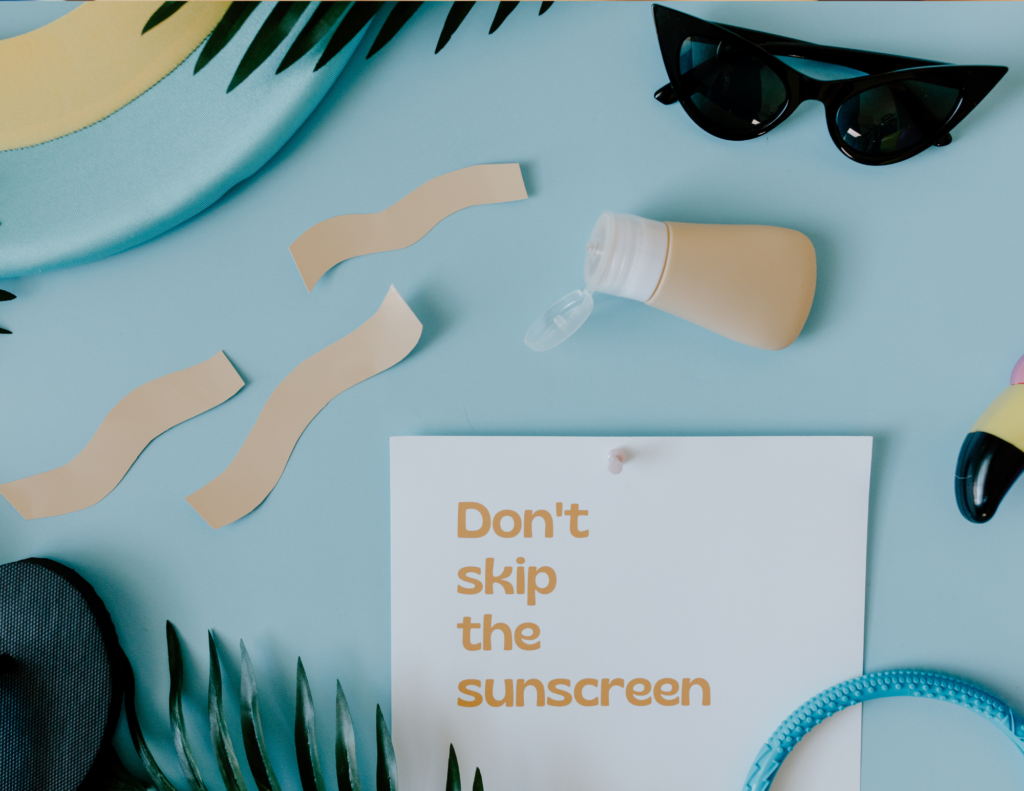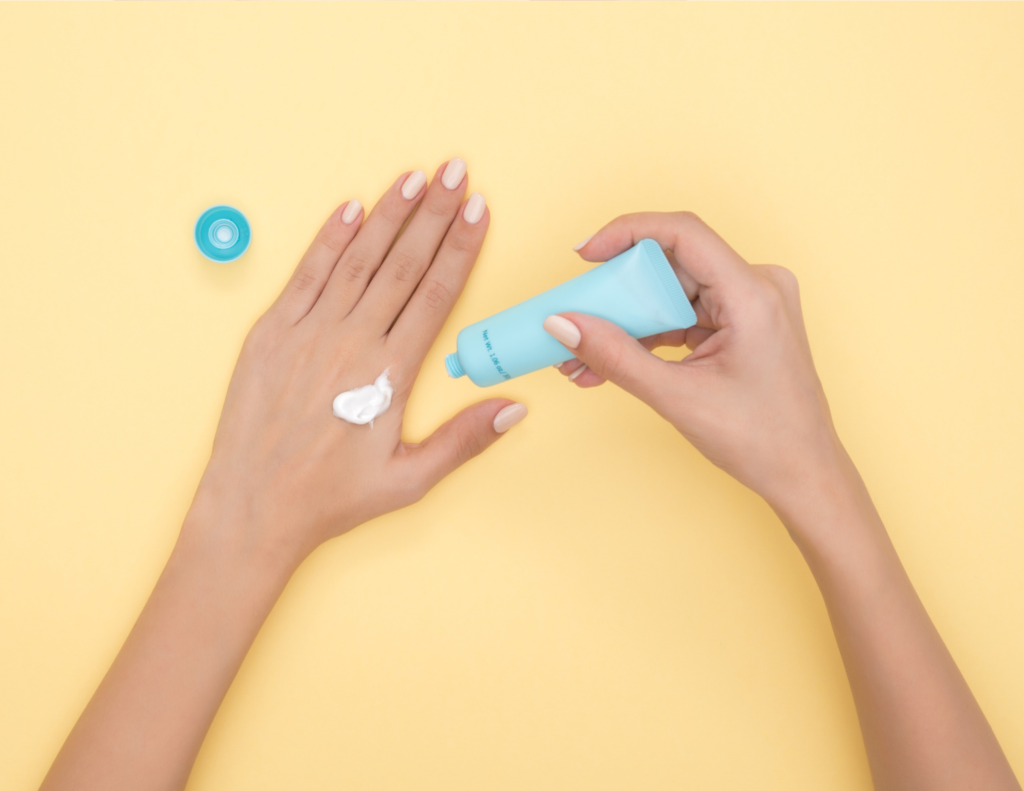101 Series: Everything You Need to Know About Sunscreen
Share

Sunscreen is an integral part of protecting yourself from the sun. It is recommended that people apply sunscreen with a broad spectrum SPF of 30 or higher every two hours. There are many different sunscreens on the market, ranging in different levels of protection, and of different formats like gels, sticks, and creams and some of which use chemical vs. physical sunscreens or a combination of both. How do you know which are best for you and your skin? How much should you use and when should you apply sunscreen? Are chemical sunscreens or physical sunscreens better? Here we’ll be covering all the sunscreen basics, including the purpose, the differences between sunscreens, and how to use them.

UV Radiation
The primary purpose of sunscreen is to protect your skin from the sun’s UV rays to prevent skin aging and sunburns and reduce the risk of skin cancer. UV rays come in two forms: UVA and UVB.
UVA – UVA radiation is the most prevalent radiation we are exposed to. It can penetrate the skin more deeply and is closely associated with skin aging, tanning, and some risk of skin cancer. It can penetrate through glass and clouds, making it important to wear sunscreen even on a cloudy day.
UVB – UVB is less common compared to UVA radiation but it is more intense. UVB exposure can result in tanning and sunburns but it is closely linked to burning and skin cancer.
It is best to look for sunscreens labeled “broad spectrum” to protect your skin from both UVA and UVB waves.
What Does SPF Mean?
SPF (Sun Protection Factor) is related to the percentage of UV rays blocked. It is not in reference to the time it lasts on your skin. SPF 15 blocks 93%, SPF 30 blocks 97%, SPF 50 blocks 98%, and SPF 100 99%. As greater SPFs don’t offer substantially greater protection, it is recommended to use sunscreens of SPF 30 is often a good go-by. Good sun protection is more related to how well you apply and reapply sunscreen.

Application
Users need to apply (obviously) and reapply sunscreen for adequate sun protection. The guidelines from the American Academy of Dermatology (AAD) are as follows:
- You should apply sunscreen about 15 minutes before going out into the sun.
- You also need to apply an adequate amount of sunscreen to cover all the skin areas exposed to the sun that isn’t protected by clothes, hats, etc. This amount is about a shot glass/ounce worth for a typical adult.
- You should also remember to cover areas like the top of your head, feet, neck, and ears.
- It is also equally important to reapply sunscreen every 2 hours, including those labeled with greater SPF or claimed to be “waterproof.” Higher SPF or waterproof sunscreen does not mean the sunscreen will necessarily last longer on your skin.
Gel, Cream, Sticks, & Sprays: What’s Best for You?
Between all the different forms and consistencies of sunscreens, how do you determine which is the best for you? The AADA suggests that:
- Creams are suitable for dry skin and the face.
- Gels are optimal for hairy areas.
- Sticks are precise to use for sensitive areas like the eyes.
- Sprays are convenient, especially for children. However, it is hard to determine if you applied enough.

What’s the Deal Between Physical vs. Chemical Sunscreens?
Physical/Mineral Sunscreens: These sunscreens protect your skin through tiny zinc oxide or titanium dioxide particles. These particles physically prevent UV rays from penetrating.
Chemical Sunscreens: Chemical sunscreens are absorbed into the skin, where it reacts with UV radiation to convert it to heat which is dissipated.
How Do You Determine Which Sunscreen to Use?
Physical sunscreens are best for people with sensitive skin as chemical sunscreens may trigger allergic reactions or have the potential to make conditions like rosacea and melasma worse. However, the benefit of chemical sunscreens is that they don’t leave a white film on your skin compared to physical sunscreens, and they require less frequent reapplication. In addition, if you are concerned about safety, then you should look toward physical sunscreens. The ingredients, zinc oxide and titanium dioxide, are classified by the FDA to be generally recognized as safe (GRAS). At the same time, there needs to be more research on chemical sunscreens.
Safety of Sunscreens
Over the past years, there have been concerns over the safety of physical and chemical sunscreens and their effects on the human body when absorbed into the skin. This section will discuss different ingredients in physical and chemical sunscreens and analyze the research conducted on them.
Physical Sunscreens
When you reduce the size of the zinc oxide or titanium dioxide particles that make up physical sunscreens, they can give better protection, be more transparent, and may penetrate the skin deeper. Most concerns of physical sunscreens are around zinc oxide. However, many studies to examine toxicity confirmed its safety. In addition, zinc oxide and titanium dioxide remain “safe” by the FDA.
Chemical Sunscreens
In 2020, the FDA reported on results of clinical studies suggesting that some chemical sunscreen actives like avobenzone, oxybenzone, octocrylene, homosalate, octisalate, and octinoxate enter the body’s bloodstream and remain in the body for extended periods. They may pose potential for reproductive and developmental issues or have a carcinogenic effect. However, the link between the elevated levels in sunscreen and these effects is not yet established.
Octocrylene, in particular, can naturally degrade into the chemical benzophenone, a suspected carcinogen that can interfere with key hormones and reproductive organs. However, the studies suggesting the potential carcinogenic effects were conducted on animals and have not been established in humans.
Another controversy surrounding chemical sunscreens is benzene contamination. Benzene is a well-known carcinogen and one people are likely to encounter every day. Benzene is found in low levels from tobacco smoke, gas stations, and industrial emissions. It is used to make chemicals in many products like plastics, dyes, and detergents. Benzene contamination has been found in hand sanitizers and soft drinks over the years.
While benzene is not an ingredient in sunscreen, contamination can occur in the manufacturing phase. In May of 2021, Valisure, an independent, for-profit pharmacy, and research testing lab, found Benzene in 78 of 300 sunscreen products tested. You can find their list of products that tested negative or positive for Benzene on their website.

The Verdict?
Though sunscreens, especially chemical sunscreens, have raised some concerns over their safety, they remain an essential part of people’s daily routines for their role in preventing skin cancer. Physical sunscreen ingredients continue to be on the FDA’s list of GRAS products, and more research should be done on chemical sunscreens to evaluate safety concerns. Benzene contamination is a rare and threatening event, but careful manufacturing oversight and regulation will help manage and reduce the risk of contamination occurring.
References:
- American Academy of Dermatology Association. Sunscreen FAQs. [Link].
- Howard, L., Birnie, A. & Sarkany R. (2021). Comment on Benzophenone Accumulates over Time from the Degradation of Octocrylene in Commercial Sunscreen Products. Chem. Res. Toxicol., 34(9), 1944–1945. [Link].
- Matta, M. K. et al (2019). Effect of Sunscreen Application Under Maximal Use Conditions on Plasma Concentration of Sunscreen Active Ingredients: A Randomized Clinical Trial. JAMA, 321(21), 2082–2091. [Link].
- Mohammed H. Y. et. al (2019) Support for the Safe Use of Zinc Oxide Nanoparticle Sunscreens: Lack of Skin Penetration or Cellular Toxicity after Repeated Application in Volunteers. Journal of Investigative Dermatology: JDD 139(2), 308-315. [Link].
- Valisure. (2022, March 31). Valisure Detects Benzene in Sunscreen. [Link].
If you enjoyed our content, please share, comment, like, and follow us on your favorite platforms!
.
.







